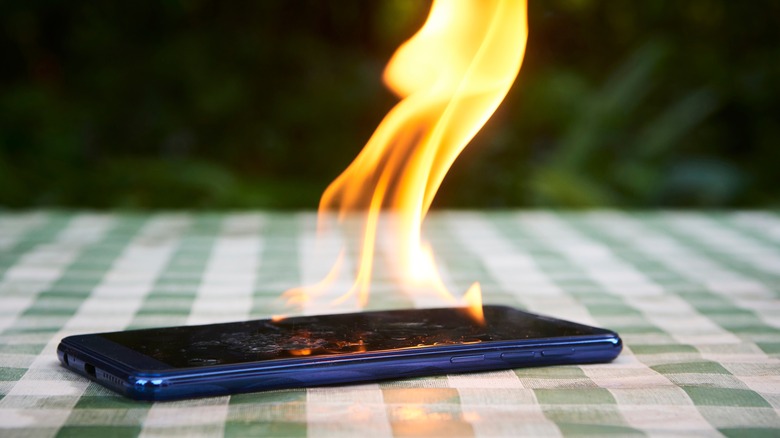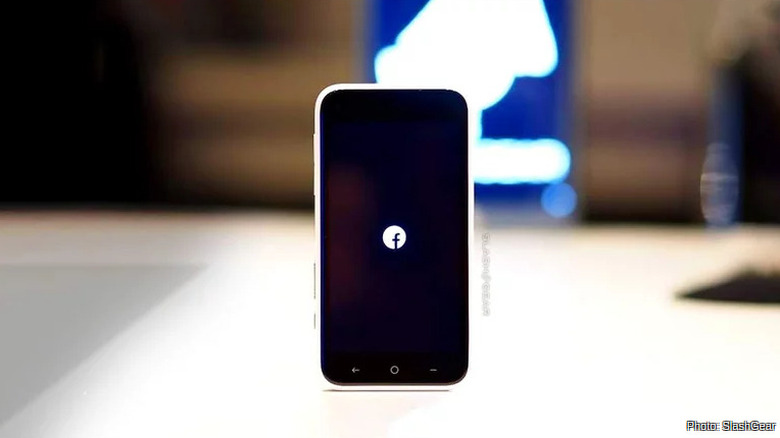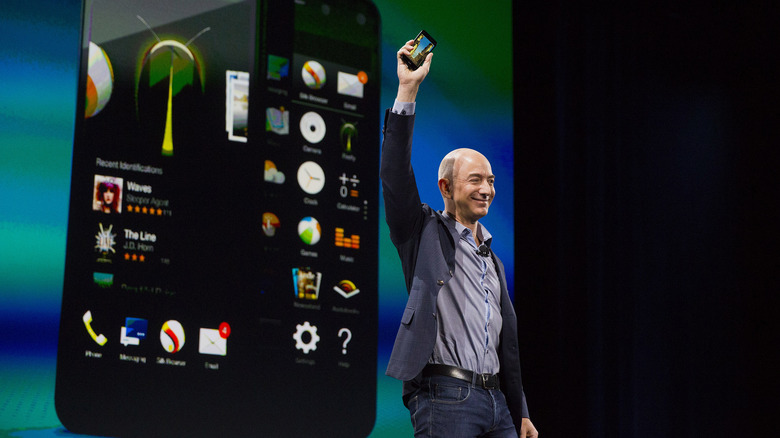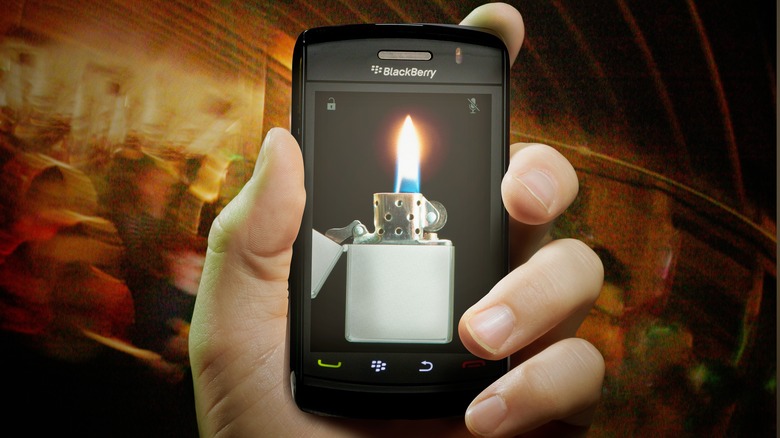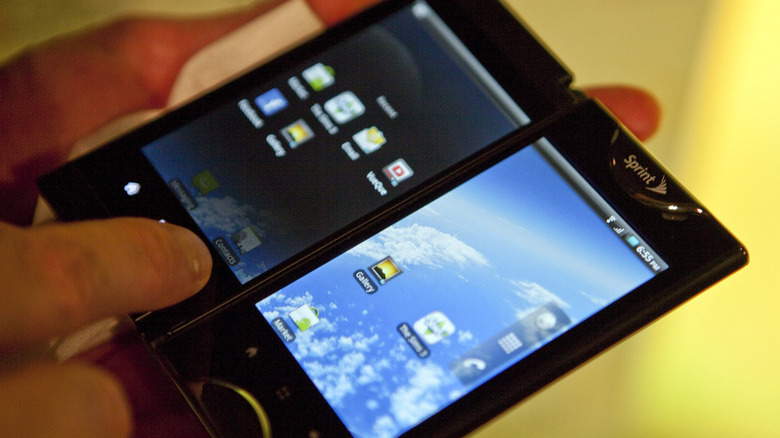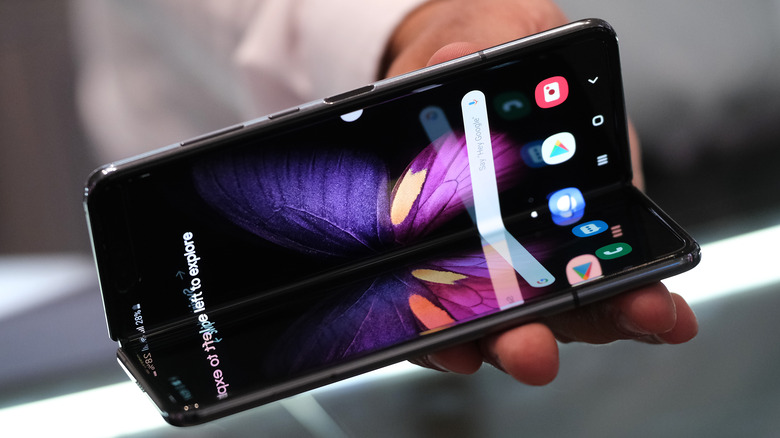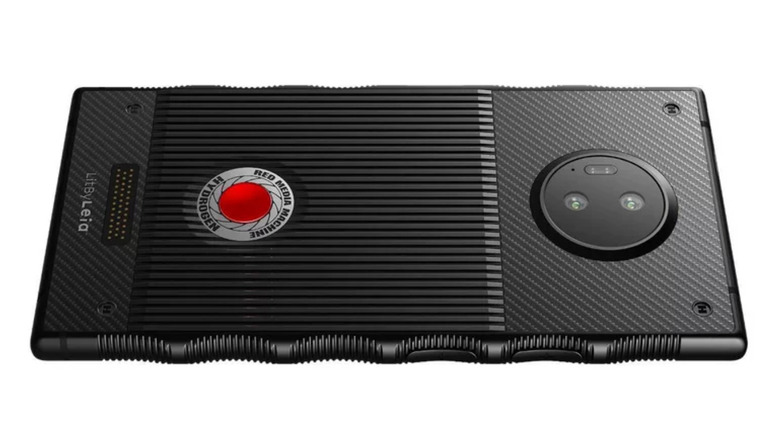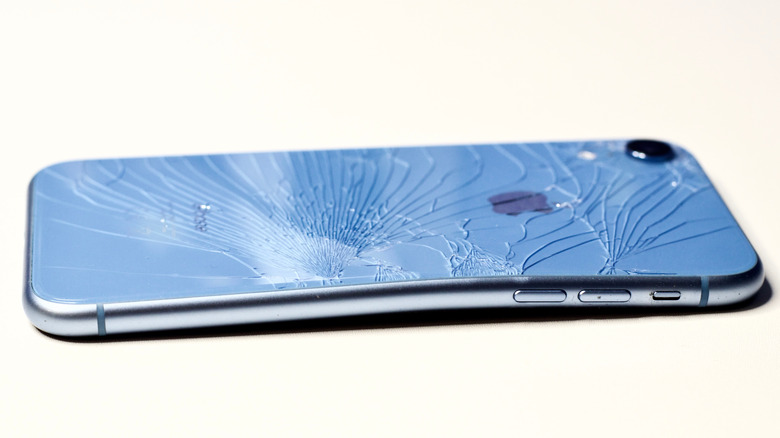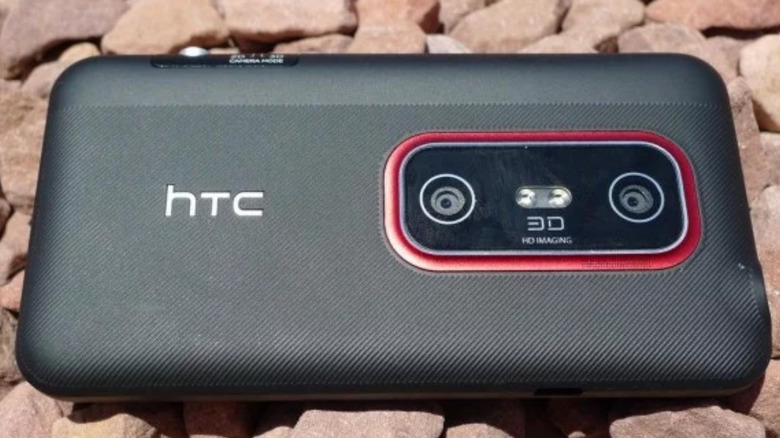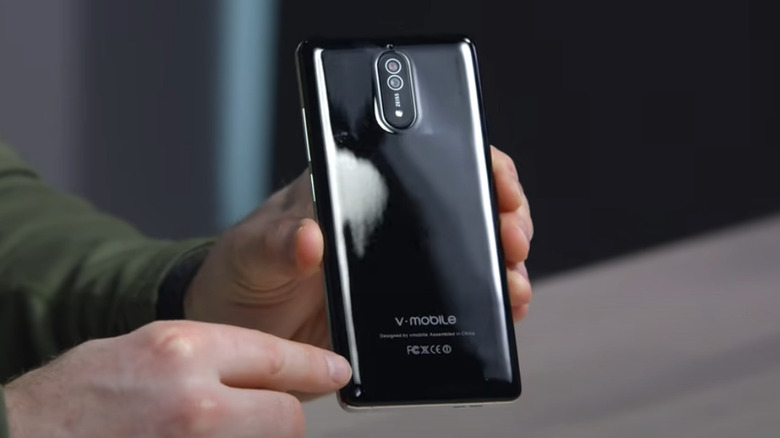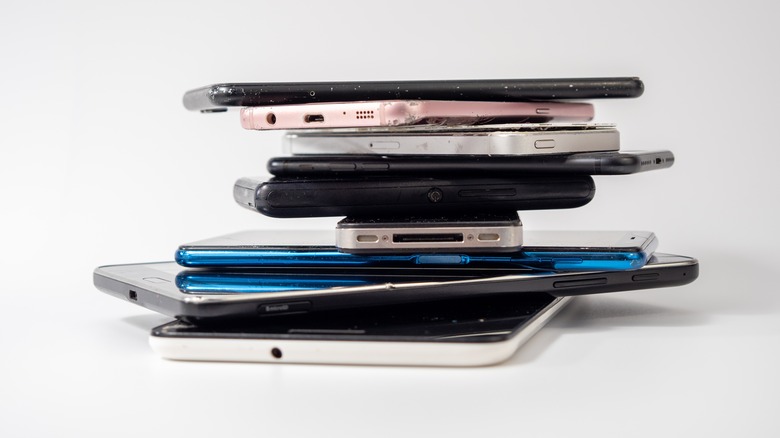The 10 Worst Smartphones Of All Time
Smartphones are incredible inventions that have changed daily life for people the world over. We have seen the widespread adoption of them from the busiest streets in Manhattan to remote and isolated mountain villages. They have opened up opportunities to have information and communication at a fingertip's length, in ways inconceivable just a decade or two before and today they are seen to be indispensable parts of daily life.
While some advanced cellular phones with multiple abilities and features existed before it came along, the iPhone is widely considered to be the first smartphone. With its total touch screen operation, integration of a completely internet-focused operating system, and ability to modify it by adding and deleting software, also known as apps, the iPhone was, at a minimum, a trendsetter. It also happened to be what many considered the best phone available when it came out.
Since then we have been treated to a plethora of smartphone models of varying forms and functions with some more successful than others. While the smartphone has surely enhanced our life, some of these models have been a disaster to live with. From terrible interfaces to awful build quality, any number of bad decisions can make a smartphone feel kinda dumb. Here are ten terribly flawed, stupid smartphones.
Galaxy Note 7
Samsung generally makes quality products. The company often raises the bar for quality and innovation for Android devices, and the Galaxy line is its flagship model. The Galaxy Note series came out at a time when screens were gradually growing up from the standard size set by the original iPhone, about 3.5 inches. Its unusually large size appealed to consumers and fit into a new category of larger mobile devices, dubbed phablets, a portmanteau of phones and tablets.
The Note sold well and was among the best-selling products for a time until around 2016 when widespread reports from many sources of the phones bursting into flames popped up. One could argue about the many merits of any given phone, but fire is generally not in the top three, or even the top five. In fact, fire is not supposed to be a feature of any phone at all. Samsung recalled them and lost a ton of money, but the damage was done and the Note 7 shall forever be known as a bad smartphone.
HTC First
HTC made a huge portion of popular Android phones when the operating system was still new, including the first Android phone ever released, the HTC Dream. Soon after the widespread adoption of Android, companies with a longtime presence on the web developed mobile-optimized websites and later created full-fledged apps to run on iOS or Android devices. By 2013 Facebook had already established itself as one of the most popular websites, and its app was installed on millions of devices worldwide.
It would be difficult to speculate as to why and how this developed, but it appears someone around the Facebook offices thought users wanted to have a more immersive Facebook experience at the ready 24/7. They developed a mobile home screen experience dedicated to the social media site and had HTC integrate it into what would be colloquially known as the Facebook phone.
This was not the first attempt to integrate Facebook more fully into a phone, as the ChaCha, which added a dedicated button to access Facebook directly, and the Salsa, which had a similar function, came before. Looking beyond the Facebook Home integration, our conclusion was that the faults of the First lay in its middling hardware and stiff competition. It may have been introduced at the wrong time and underdeveloped, but, as popular as Facebook is, nobody wanted it to be involved so intimately in everything they do. It is for good reason we have not seen another attempt from Facebook to dominate our devices.
Amazon Fire Phone
Lasting just one year, Amazon's first foray into the mobile phone market did not end well. It also provided lessons in how not to break into the market — or if a company should even try at all.
Amazon saw great success with its line of readers and affordable tablets. Building on that success, Amazon chose to enter the smartphone business. The Fire Phone entered the scene in 2014, offering an Amazon-centric offshoot of Android, Fire OS. We found the pricing to be problematic at the time and this may have been its downfall, but it was not pricing alone to spell its doom.
The Fire Phone was introduced at a price of $199 with a contract, as other phones were sold at the time. However, that was a departure from the low-cost loss-leaders that the fire tablets were up until then, which meant Amazon had directed their phone to a different buyer not motivated by a low price, but premium features. Also, the Fire OS was not integrated with Google services, forcing users onto the Amazon Appstore. This offered far fewer apps than the competition and was among the many reasons the phone failed, according to Time.
The Fire Phone proved that attempting to force users into a new experience while charging a premium for it takes what could be a good device and makes it worse.
Blackberry Storm
When a company leads its market in providing innovative products and, consequently, becomes a sales leader in its field, it does not want to get caught off guard by new products. However, that is what happened to Research In Motion, maker of the Blackberry mobile device. The Blackberry was so popular, especially among business users, that it became a news story when incoming president Barack Obama needed to forego using his per Secret Service security standards. But a couple of years before the 44th President was sworn in, the iPhone came out and sent RIM scurrying.
What it came up with was the Blackberry Storm, the first touch screen Blackberry. We originally announced the coming Storm in 2008. This means Blackberry had less than two years to develop the hardware and write the software to transition its OS from a keyboard-based design to all touch. To an outside observer, this looks like a fairly short development window and when the product arrived in stores, it showed. When Engadget first reviewed the phone, many flaws became instantly clear. The biggest seems to be that the touch screen was inaccurate, insensitive, and unrefined. Additionally, the software lagged in development compared to the iPhone and the general experience was subpar.
Usually, when a company must play catch-up to a competitor, it only gets one shot. Blackberry missed, and it should come as no surprise that RIM is gone and Blackberry phones are no longer manufactured.
Kyocera Echo
Kyocera has never been a big player in the market for mobile phones, but it has been producing them for more than two decades. Many of their phones over the years have relied on being unique or niche offerings to differentiate them from the competition. One such attempt at offering a novel device that fits into its own category is the Echo, a dual-screen smartphone released in 2011.
In our hands-on review, the novelty of the dual screens comes up as its most unique identifying feature as the hardware supporting the phone was not necessarily premium level for its time. Furthermore, Android had not yet been developed to run dual screens natively, so the OS and a few apps had to be tweaked to run on it. Therefore, the performance of the software ends up being mediocre and with plenty of room for improvement.
Perhaps the folks at Kyocera were a bit too forward-thinking, bringing to market a device before it was ready. Battery technology couldn't keep up with two screens, and nobody wanted a thick line in the middle of an image if an app was capable of displaying images across two screens. It was out of place and ill-conceived and, in the end, few bought it. The Kyocera Echo's legacy is mostly to be a placeholder on lists of terrible devices.
Samsung Galaxy Fold
The Galaxy fold accomplished what seemed impossible, to fold a screen in half. To make this happen, Samsung used plastic, and that created problems from the start. We reported on problems when people in the press started peeling off what looked like protective film typical on new devices, only to find out they were pulling away the top layer of the screen. Others found their units with peculiar bulges along the seam and more still discovered thick black lines running from hinge to hinge.
Having pre-release press review models broken before the official launch date is not a good look for Samsung. The plastic top layer of the screen is somewhat rigid, but it is still plastic. It does not take much to score, scratch, or cut it. Close the phone with a small, random object and it can pierce the fragile screen with ease. The benefits of the phone are great, but the need to handle it with kid gloves and the steep price of entry, about $2,000, doesn't make it worth it. We found the Fold to appear to be rushed to market, leaving little time to discover its flaws.
There are plenty of durable, high-spec devices available for a more reasonable price and the Fold just doesn't seem to be worth the leap. Until Galaxy comes back with some kind of magical material to address the inherent faults of plastic, the Fold can remain on this list.
RED Hydrogen One
Sometimes a company comes along with novel applications of existing technology to create something exciting. Other times, a company comes along with novel applications of existing technology and utterly fails, providing a product that nobody wants, doesn't work, and costs too much. This is the story of the RED Hydrogen One, a phone created to meet a demand that didn't exist using technology that didn't work.
The company RED had established itself as a premier maker of digital cameras, so those in the know had high expectations for its first foray into the mobile phone market. Instead of building on their stellar reputation in cameras, RED introduced a phone with a weird holographic 3D-like display. In a Verge review of the phone, it was said to be wonky tech that, when it did work, could make the viewer feel a little sick.
Furthermore, the "4V" tech, as it was called, only worked with a few apps developed specifically for this phone. It is also heavy and had side buttons that were all too easily depressed by accident, but those are minor flaws compared to the rest. All in all, it is a phone that nobody wanted with features for which nobody cared, and all of this was done poorly and for too much money, around $1,600. SlashGear reported that RED would ultimately stick to making ultra-high-end cameras and leave the phones alone, a good decision.
iPhone 6
Apple started a tech revolution with the first iPhone and had already built a reputation for creating innovative and quality products. That is precisely why it is all that much more disappointing when it fails to get one right.
Multiple reports of the phone bending while being stored in peoples' pockets or subjected to moderate stress arose, and the issue became amplified when Unbox Therapy picked up on it and created a video specifically testing the phone with dismal results. While the phone does not always break, moderate stress can cause it to have a permanent bend centered in the frame around the location of the volume buttons. Furthermore, an issue related to the bending issue called "Touch Disease" arose, something we covered in 2016. This flaw can also result from moderate bending, causing the chip to become dislodged and, preventing touch response to a part of the screen, which kinda makes it useless.
To make matters worse, internal documents from Apple showed that Apple knew the phone was susceptible to damage from bending (via Vice). Furthermore, Apple's preferred fix for either issue was a replacement, which was convenient as many phones were already out of warranty. While "Bendgate" and "Touch Disease" caused some consternation from the Apple faithful and really upset some owners of the iPhone 6, Apple remains on top of their game. Still, there's not much worse than paying a premium price for a flagship product only to find out the manufacturer knew it was subpar.
HTC EVO 3D
3D entertainment is one of the oldest novelties of the modern era. Victorians fascinated with the outside world marveled at far-off locales through special viewers called stereoscopes that used rudimentary dual images creating a 3D effect. The fascination with 3D persisted through the decades with 3D horror movies and failed 3D TV, and finally ending up on a mobile phone, the HTC EVO 3D. Produced at a time when HTC was at the top of the smartphone game, the EVO was forward-looking, innovative, and utterly useless.
It all started with the continued fascination with 3D and attempting to make it something people actually want. The EVO featured dual lenses split apart such that they could take images to be transposed into 3D. For its time, the hardware was comparable to other similar phones, but nothing extraordinary. According to our review, the inclusion of the 3D camera meant ordinary picture quality was lacking. It also had a shortage of apps for the 3D and the actual 3D images were fairly unimpressive.
The HTC EVO 3D built upon a decent phone package by adding a novelty that did little to increase its utility or value. The 3D effect was nothing but a novelty and, in the end, kind of useless. A bad phone is one thing, but a useless phone is worse.
V Mobile N8-N
Most people will not recognize the V-Mobile name and there is a good reason for this. However, in 2019, the company sold smartphones. Whether it manufactured them or not is up for debate, and surely nobody would take credit for it. In fact, finding information on it is difficult.
Yet, the N8-N was available and could be purchased from Amazon at one time. It is difficult to find the specs listed anywhere, but the user reviews are where it's at. First, it earned only 2.9 of 5 stars and there are more 1-star than 5-star ratings. In fact, nearly half of the ratings are just one-star. Some gems from the reviews include "it sucks" and "garbage." One user said, "This is a piece of garbage, it worked for one month and shut down completely."
Perhaps the best review of all is done by popular tech review channel Unbox Therapy on YouTube, where the phone came brand new out of the box and shut itself down after five minutes of use. The review itself is rather entertaining, and only gets better when it turns itself off a second time before the video ends. If it cannot even remain on for the first five minutes of use, it may well be that the V-Mobile N8-N is the worst phone ever.
How we compiled this list
A list claiming to contain "the worst smartphones of all time" will always have subjectivity. You may have owned a borderline paperweight that made the risk of death that came along with something like the Galaxy Note 7 a worthy concession. However, to keep things objective, SlashGear compiled the list based on the following criteria:
To qualify, a phone either had to have glaring and well-publicized faults such as the Note 7's propensity to spontaneous combustion or the original Galaxy Fold's durability issues, or it had to be so ill-judged that it was doomed from the start — like the Amazon Fire Phone. Following this criteria, SlashGear produced a concise list, then gauged the weight of each failure and ranked accordingly.
Anything with a lithium battery can theoretically catch fire — but it was a widespread problem with the Note 7 and not simply a one-off. The Fire Phone might have done well if it targeted a different segment of the market, but throwing something like that into the mix with Samsung's Galaxy series and the iPhone means the same standards will judge it.

